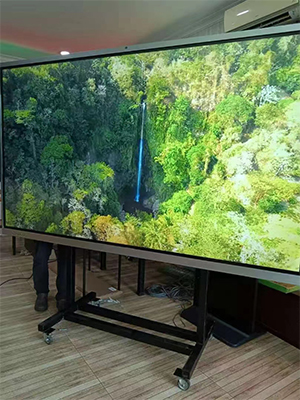interactive whitebroad
Enhanced Engagement: interactive whiteboards allow students to actively participate in the learning process. They can interact with digital content, play educational games, and solve problems collaboratively. This increased interactivity boosts student engagement and motivation.
Visual Learning: The visual nature of interactive whiteboards allows for a more effective learning experience. Teachers can present information through visuals, images, videos, and animations, making abstract concepts easier to understand. This visual approach caters to diverse learning styles and improves overall comprehension.
Multimodal Learning: interactive whiteboards support a wide range of multimedia resources, including text, audio, and visuals. Teachers can integrate various learning materials, such as online videos, educational websites, and interactive quizzes, to create a multimodal learning experience. This strengthens student understanding and retention.
Collaboration Opportunities: interactive whiteboards promote collaborative learning by encouraging students to work together on projects and presentations. With the ability to annotate, highlight, and manipulate digital content, students can actively contribute to group activities, fostering teamwork and peer-to-peer learning.
Real-Time Feedback: interactive whiteboards enable teachers to provide instant feedback to students. By using interactive tools like polls, quizzes, and surveys, teachers can assess student understanding and adjust their teaching accordingly. Immediate feedback helps identify and address learning gaps quickly, enhancing the effectiveness of instruction.
Teacher Flexibility: interactive whiteboards offer teachers the flexibility to adapt their lessons on the go. Teachers can easily modify and customize content based on student needs, making learning personalized and differentiated. They can also save and share lesson materials, allowing for easy revision and future use.
Technology Integration: interactive whiteboards integrate seamlessly with other educational technologies like tablets, laptops, and document cameras. Teachers can display content from multiple sources simultaneously, creating a connected and versatile learning environment. This integration promotes digital literacy and prepares students for the technologically-driven world.

